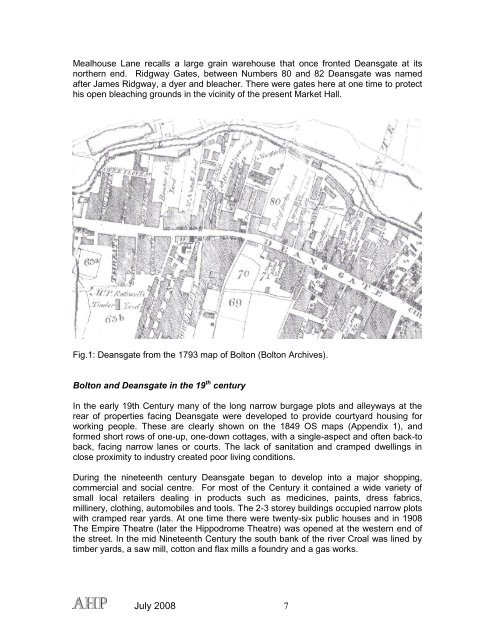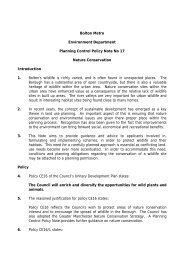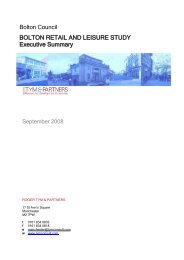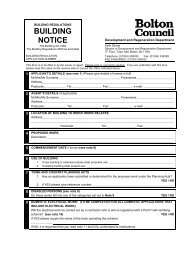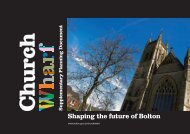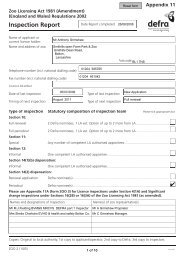Deansgate Conservation Area - Bolton Metropolitan Borough Council
Deansgate Conservation Area - Bolton Metropolitan Borough Council
Deansgate Conservation Area - Bolton Metropolitan Borough Council
Create successful ePaper yourself
Turn your PDF publications into a flip-book with our unique Google optimized e-Paper software.
Mealhouse Lane recalls a large grain warehouse that once fronted <strong>Deansgate</strong> at its<br />
northern end. Ridgway Gates, between Numbers 80 and 82 <strong>Deansgate</strong> was named<br />
after James Ridgway, a dyer and bleacher. There were gates here at one time to protect<br />
his open bleaching grounds in the vicinity of the present Market Hall.<br />
Fig.1: <strong>Deansgate</strong> from the 1793 map of <strong>Bolton</strong> (<strong>Bolton</strong> Archives).<br />
<strong>Bolton</strong> and <strong>Deansgate</strong> in the 19 th century<br />
In the early 19th Century many of the long narrow burgage plots and alleyways at the<br />
rear of properties facing <strong>Deansgate</strong> were developed to provide courtyard housing for<br />
working people. These are clearly shown on the 1849 OS maps (Appendix 1), and<br />
formed short rows of one-up, one-down cottages, with a single-aspect and often back-to<br />
back, facing narrow lanes or courts. The lack of sanitation and cramped dwellings in<br />
close proximity to industry created poor living conditions.<br />
During the nineteenth century <strong>Deansgate</strong> began to develop into a major shopping,<br />
commercial and social centre. For most of the Century it contained a wide variety of<br />
small local retailers dealing in products such as medicines, paints, dress fabrics,<br />
millinery, clothing, automobiles and tools. The 2-3 storey buildings occupied narrow plots<br />
with cramped rear yards. At one time there were twenty-six public houses and in 1908<br />
The Empire Theatre (later the Hippodrome Theatre) was opened at the western end of<br />
the street. In the mid Nineteenth Century the south bank of the river Croal was lined by<br />
timber yards, a saw mill, cotton and flax mills a foundry and a gas works.<br />
July 2008 7


